Search
Remove Ads
Advertisement
Search Results
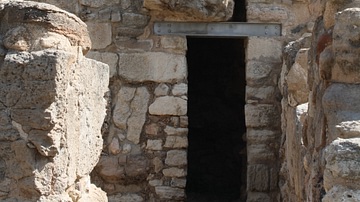
Image
Minoan Horns of Consecration
Bull horns were a common religious symbol in the Cretan Minoan culture (2000 BCE - 1450 BCE), represented in fresco, on pottery and as here from the palace of Knossos, in architectural stone decoration.
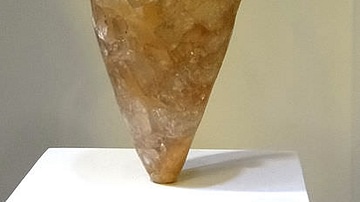
Definition
Zakros
Ideally situated in a sheltered gulf surrounded by mountains, Zakros (or Kato Zakros) in south-eastern Crete, was the fourth largest Minoan settlement after Knossos, Phaistos and Malia. The ancient name has been lost and the present one derives...
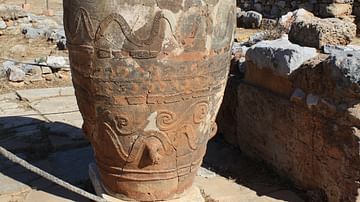
Definition
Malia
Located near a fertile plain in northern Crete and with its own harbour, Malia was one of the major settlements and palaces of the Minoan civilization. Inhabited since Neolithic times (6000 BCE) and with the first evidence of monumental architecture...
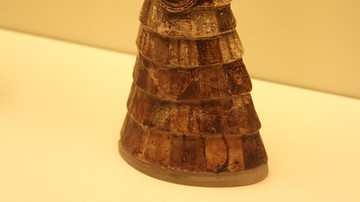
Image
Minoan Snake Goddess, Knossos.
Faience figurine of the Minoan Snake Goddess - her dominion was over nature and fertility. New-Palace period (1600 BCE). Heraklion Archaeological Museum, Crete.
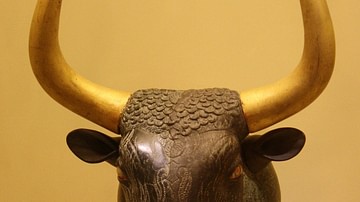
Image
Minoan Rhyton
Stone rhyton (libation vase) in the form of a bull's head from the Minoan site of Knossos, New-Palace period (1600-1500 BCE), Heraklion Archaeological Museum, Crete.
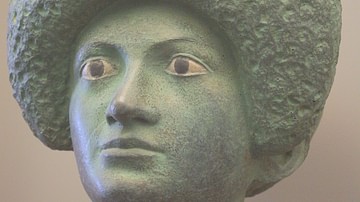
Definition
Roman Art
The Romans controlled such a vast empire for so long a period that a summary of the art produced in that time can only be a brief and selective one. Perhaps, though, the greatest points of distinction for Roman art are its very diversity...

Image
Minoan Bull Leaping
A fresco showing bull leaping, Minoan Knossos (Final Palatial period 1450-1400 BCE), Heraklion Archaeological Museum, Crete.
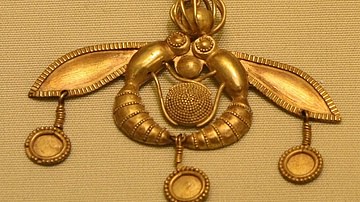
Image
Minoan Bee Pendant
A solid gold Minoan pendant depicting two bees clutching a honeycomb, Old Palace cemetery at Chrysolakkos near Malia, Crete, 1800-1700 BCE.
Herakleion Archaeological Museum, Crete.
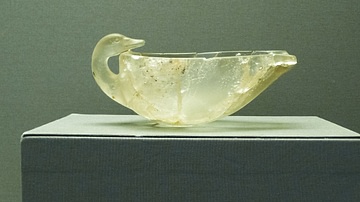
Image
Minoan Rock-Crystal Bowl
A Minoan rock-crystal bowl in the form of a duck, 16th century BCE. The vessel was found at Mycenae but has been attributed to the earlier Minoan civilization based on Crete. The vessel was probably used to store cosmetic creams. (National...
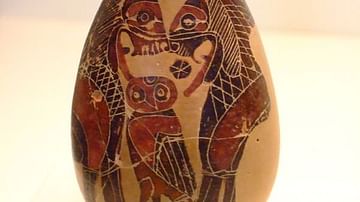
Article
A Visual Glossary of Greek Pottery
Alabastron (pl. alabastra) - a small jar for storing perfumes, named after the material (alabaster) the first examples were made from. They were often carried by a string looped around the neck of the vessel. Amphora (pl. amphorae) - one...